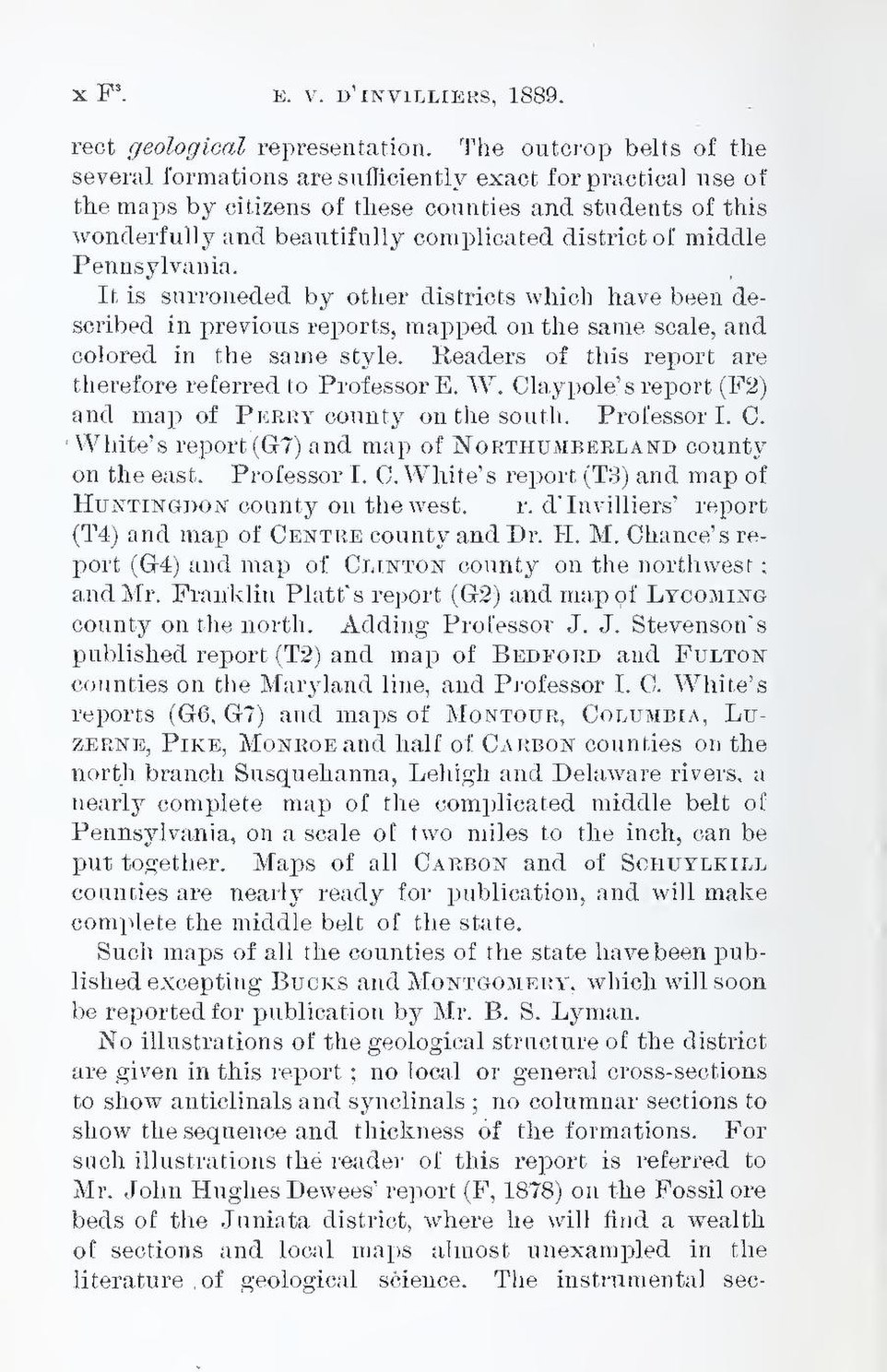correct geological representation. The outcrop belts of the several formations are sufficiently exact for practical use of the maps by citizens of these counties and students of this wonderfully and beautifully complicated district of middle Pennsylvania.
It is surroneded by other districts which have been described in previous reports, mapped on the same scale, and colored in the same style. Readers of this report are therefore referred to Professor E. W. Claypole’s report (F2) and map of Perry county on the south. Professor I. C. White’s report (G7) and map of Northumberland county on the east. Professor I. C. White's report (T3) and map of Huntingdon county on the west. r. d'Tnvilliers’ report (T4) and map of Centre county and Dr. H. M. Chance’s report (G4) and map of Clinton county on the northwest; and Mr. Franklin Platt's report (G2) and map of Lycoming county on the north. Adding Professor J. J. Stevenson's published report (T2) and map of Bedford and Fulton counties on the Maryland line, and Professor I. C. White’s reports (G6, G7) and maps of Montour, Columbia, Luzerne, Pike, Monroe and half of Carbon counties on the north branch Susquehanna, Lehigh and Delaware rivers, a nearly complete map of the complicated middle belt of Pennsylvania, on a scale of two miles to the inch, can be put together. Maps of all Carbon and of Schuylkill counties are nearly ready for publication, and will make complete the middle belt of the state.
Such maps of all the counties of the state have been published excepting Bucks and Montgomery, which will soon be reported for publication by Mr. B. S. Lyman.
No illustrations of the geological structure of the district are given in this report; no local or general cross-sections to show anticlinals and synclinals; no columnar sections to show the sequence and thickness of the formations. For such illustrations the reader of this report is referred to Mr. John Hughes Dewees’ report (F, 1878) on the Fossil ore beds of the Juniata district, where he will find a wealth of sections and local maps almost unexampled in the literature of geological science. The instrumental sec-
